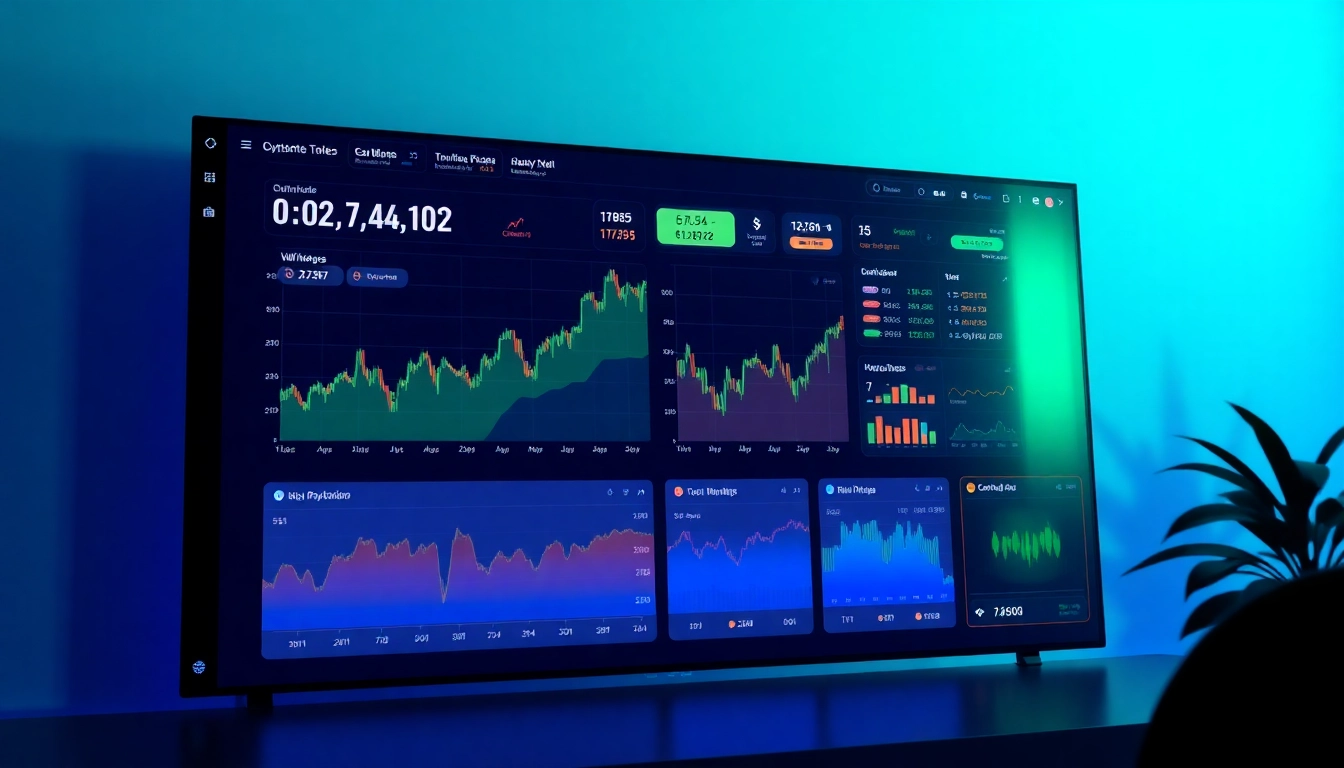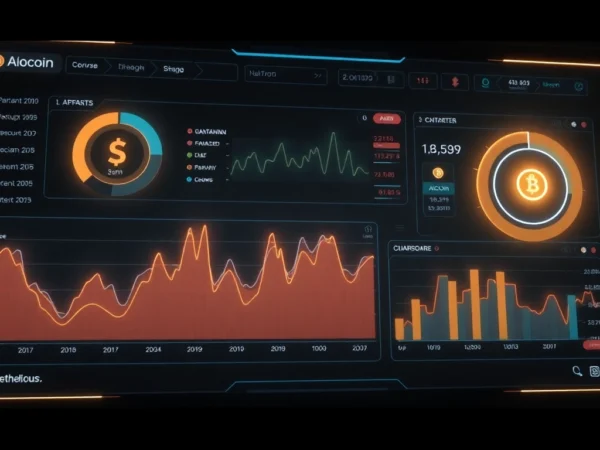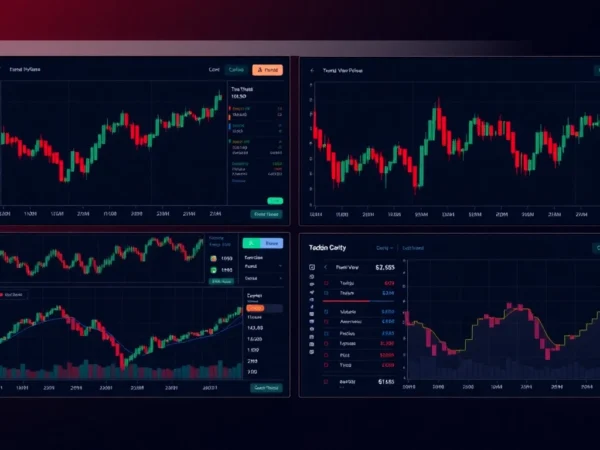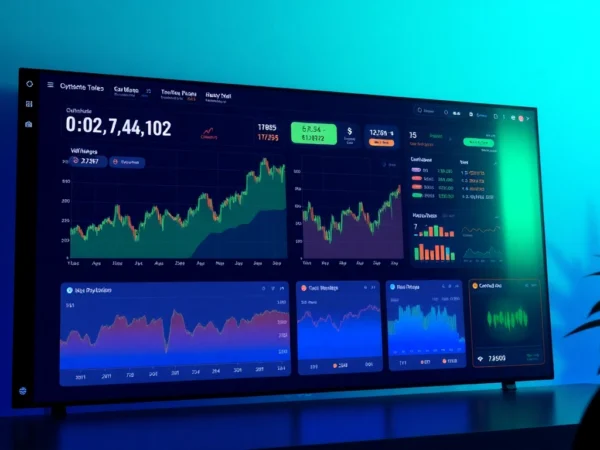Cryptocurrency Market Update: Key Trends and Insights for Investors in 2023
Comprehensive Cryptocurrency Market Update: Navigating the Volatile Digital Asset Landscape
The cryptocurrency market continues to be one of the most dynamic segments of the global financial ecosystem, characterized by rapid fluctuations, evolving technological innovations, and shifting regulatory landscapes. Recent market movements have highlighted a period of relative stability for major digital assets like Bitcoin and Ethereum, while emerging cryptocurrencies and sector-specific tokens exhibit heightened volatility. For investors and industry participants, staying informed through a detailed Cryptocurrency Market Update is essential to making strategic decisions amid these fluctuating conditions.
Understanding the Current Cryptocurrency Market Landscape
Overview of Recent Cryptocurrency Market Movements
Over the past few weeks, the cryptocurrency ecosystem has experienced mixed signals. Bitcoin, often regarded as the market’s flagship asset, has maintained a relatively flat trajectory, lingering near key support levels along its 200-week trendline—a critical indicator for long-term bullish or bearish shifts. Ethereum, along with other top altcoins, has shown signs of consolidation after a period of rapid gains, partly driven by institutional interest and technological upgrades such as Ethereum 2.0 developments.
Despite the macroeconomic uncertainties, the total market capitalization of cryptocurrencies has shown resilience, particularly in sectors like DeFi and NFTs. Notably, the NFT market cap recently surpassed $9.3 billion, albeit with some slowdown as Ether rallies moderate. Meanwhile, smaller and emerging tokens are experiencing heightened volatility, offering both risk and opportunity to traders willing to navigate unpredictable swings.
Major Factors Influencing Cryptocurrency Prices
Several key factors continue to shape cryptocurrency prices:
- Regulatory Developments: Increased scrutiny from globally significant regulators, notably the SEC in the United States, has led to temporary declines in trading volumes and heightened caution among investors.
- Macroeconomic Indicators: Expectations of U.S. Federal Reserve interest rate cuts and monetary easing have traditionally supported cryptocurrencies as alternative assets, although this relationship has shown signs of decoupling recently.
- Institutional Adoption: Major financial institutions like MicroStrategy remain committed to Bitcoin, signaling institutional confidence amid market volatility. These moves frequently bolster credibility and market sentiment.
- Technological Advancements: Upgrades such as Ethereum’s network improvements and innovations in DeFi and NFT sectors influence investor confidence and network utility, indirectly affecting prices.
Global Economic Trends Impacting Digital Currencies
The broader economic environment directly influences digital asset markets. For instance, rising inflation fears in the US have propelled demand for hedges like Bitcoin, while geopolitical tensions and trade uncertainties have prompted safe-haven flows into crypto as alternative assets. Additionally, the association between traditional market sentiment and crypto remains complex; recent policies, such as the US calls for Fed resignations and diplomatic skirmishes, contribute to market fluctuations.
Detailed Analysis of Top Cryptocurrencies
Bitcoin: Trends, Predictions, and Market Behavior
Bitcoin continues to be the dominant force shaping the market narrative. Its recent stability near the 200-week trendline suggests a cautious optimism among investors. Technical analysts highlight that if Bitcoin maintains its support levels, it could initiate a bullish trend, potentially reaching new record highs. Historically, Bitcoin shows increased upward momentum following positive macroeconomic signals like rate cut hopes, but unexpected regulatory crackdowns or macroeconomic shocks could impede this trajectory.
Expert predictions vary; some analysts project Bitcoin could ascend past $50,000 if bullish indicators persist, while others caution that short-term volatility may continue. Successful navigation requires awareness of key support and resistance levels, as well as monitoring macroeconomic cues.
Ethereum and Other Altcoins: Opportunities and Risks
Ethereum’s essential upgrade to Ethereum 2.0 and its gradual transition to proof-of-stake has revitalized some investor enthusiasm. Its broader ecosystem, including DeFi and NFT platforms, continue to grow, offering diversified exposure. However, altcoins like Solana, Cardano, and Binance Coin face varying degrees of regulatory pressure and technological challenges, which contribute to their higher volatility profiles.
Opportunities lie in participating in potential breakout projects and emerging DeFi protocols, but investors must weigh the risks associated with less mature networks and vulnerabilities to market manipulations.
Emerging Cryptocurrencies to Watch in 2023
New tokens with innovative use-cases, such as those focused on privacy, interoperability, or sustainability, present intriguing opportunities. Projects like Polygon (MATIC), Avalanche, and newer DeFi tokens are gaining traction, driven by institutional and retail adoption. However, their success hinges on technological resilience, regulatory acceptance, and market sentiment, making diligent due diligence essential before investment.
Strategies for Navigating the Cryptocurrency Market Update
Investment Techniques for Volatile Markets
Given the inherent volatility, adopting disciplined investment techniques is critical. Strategies such as dollar-cost averaging (DCA), which spreads out investments over time, help mitigate timing risks. Additionally, focusing on high-quality assets with strong fundamentals, clear use cases, and active development teams enhances the likelihood of long-term gains.
Risk Management and Diversification Tips
Risk mitigation involves diversifying across different sectors—DeFi, NFTs, layer-1 protocols—and market caps. Utilizing stop-loss orders and setting predefined profit targets can protect gains during sudden downturns. It’s also crucial to keep abreast of technological updates and regulatory shifts to adapt strategies proactively.
Utilizing Market Data for Trading Decisions
Advanced traders leverage real-time data feeds, analysis tools, and sentiment indicators to inform their trades. Monitoring on-chain metrics, such as transaction volume and active addresses, provides insights into market activity. Combining technical analysis with macroeconomic indicators enhances decision-making robustness, especially in a landscape where news events can cause swift price reactions.
Legal, Regulatory, and Security Considerations
Latest Regulations Affecting Digital Currency Trading
The regulatory landscape remains fluid. Authorities are increasingly imposing KYC/AML requirements and scrutinizing initial coin offerings (ICOs). The US SEC’s recent actions have impacted some DeFi projects, prompting further discussions on compliance. Investors must stay informed via official channels and adapt their strategies accordingly.
Security Best Practices for Crypto Investors
Security remains paramount; safeguarding private keys, using hardware wallets, and avoiding phishing scams are critical. Employing multi-factor authentication and regularly updating software can reduce system vulnerabilities. Awareness of scams and social engineering tactics also enhances security posture.
Upcoming Policy Changes and Market Impact
Anticipated policy developments, including potential ETF approvals and international regulatory harmonization, could significantly influence market dynamics. Positive regulatory signals tend to boost confidence, while restrictive measures can trigger retracements and volatility spikes.
Future Outlook and Technological Innovations in Cryptocurrency
Predicted Market Trends and Growth Catalysts
Looking ahead, increased adoption of decentralized finance (DeFi), growth of NFT markets, and broader integration of blockchain in traditional finance are promising growth drivers. Moreover, advances in scalability solutions like Layer 2 protocols aim to mitigate congestion and transaction costs, further facilitating mainstream adoption.
The Role of Blockchain and DeFi in Market Evolution
Blockchain technology is central to transparent, immutable transactions. DeFi platforms are revolutionizing banking functions, enabling decentralization, peer-to-peer lending, and automated trading. These innovations are expected to accelerate, transforming how value is transferred globally.
Innovations Shaping the Future of Digital Currency
Emerging technologies such as central bank digital currencies (CBDCs), smart contract enhancements, and interoperability solutions promise to create a more integrated ecosystem. Artificial intelligence-driven trading platforms and security protocols will further refine market operations and reduce risks.










